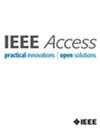基于邻域半径和隶属度的密度峰聚类算法
IF 3.4
3区 计算机科学
Q2 COMPUTER SCIENCE, INFORMATION SYSTEMS
引用次数: 0
摘要
密度峰聚类(DPC)算法是一种基于密度的聚类方法,可以有效地识别密度均匀的聚类。然而,如果数据集密度不均匀,密度较低的聚类往往具有较低的决策值,这往往导致聚类中心被忽略。针对这一局限性,提出了一种结合邻域半径和隶属度的密度峰聚类算法。该方法首先引入k近邻密度估计来建立密度阈值,将数据集分割成高密度和低密度区域。在高密度区域,采用DPC算法进行初始聚类,识别出突出的聚类结构。对于低密度点,采用邻域半径和密度准则将这些点分配到合适的高密度聚类中,从而减少误分类。此外,为了提高低密度点分配的精度,还引入了隶属度概念。未分配的低密度点使用DPC算法进行二次聚类。该方法在8个合成数据集和11个真实数据集上进行了评估,并与DPC- knn、DPC、K-means和DBSCAN进行了比较。实验结果表明,该算法在聚类性能上始终优于这些方法,突出了算法的有效性和鲁棒性。本文章由计算机程序翻译,如有差异,请以英文原文为准。
Density Peaks Clustering Algorithm Based on Neighborhood Radius and Membership Degree
The density peaks clustering (DPC) algorithm is a density-based clustering method that effectively identifies clusters with uniform densities. However, if the datasets have uneven density, clusters with lower densities tend to have lower decision values, which often leads to the cluster centers being overlooked. To address this limitation, a novel density peaks clustering algorithm incorporating neighborhood radius and membership degree is proposed. The method begins by introducing k-nearest neighbor density estimation to establish a density threshold, segmenting datasets into high-density and low-density regions. In the high-density region, the DPC algorithm is applied to perform initial clustering, identifying prominent cluster structures. For low-density points, neighborhood radius and density criteria are employed to assign these points to appropriate high-density clusters, thereby reducing misclassification. In addition, the membership degree concept is incorporated to improve the accuracy of low-density point assignments. Low-density points that remain unassigned undergo secondary clustering using the DPC algorithm. The proposed approach is evaluated on eight synthetic datasets and eleven real-world datasets, with comparisons to DPC-KNN, DPC, K-means, and DBSCAN. The experimental results demonstrate that the proposed algorithm consistently outperforms these methods in clustering performance, highlighting its effectiveness and robustness.
求助全文
通过发布文献求助,成功后即可免费获取论文全文。
去求助
来源期刊

IEEE Access
COMPUTER SCIENCE, INFORMATION SYSTEMSENGIN-ENGINEERING, ELECTRICAL & ELECTRONIC
CiteScore
9.80
自引率
7.70%
发文量
6673
审稿时长
6 weeks
期刊介绍:
IEEE Access® is a multidisciplinary, open access (OA), applications-oriented, all-electronic archival journal that continuously presents the results of original research or development across all of IEEE''s fields of interest.
IEEE Access will publish articles that are of high interest to readers, original, technically correct, and clearly presented. Supported by author publication charges (APC), its hallmarks are a rapid peer review and publication process with open access to all readers. Unlike IEEE''s traditional Transactions or Journals, reviews are "binary", in that reviewers will either Accept or Reject an article in the form it is submitted in order to achieve rapid turnaround. Especially encouraged are submissions on:
Multidisciplinary topics, or applications-oriented articles and negative results that do not fit within the scope of IEEE''s traditional journals.
Practical articles discussing new experiments or measurement techniques, interesting solutions to engineering.
Development of new or improved fabrication or manufacturing techniques.
Reviews or survey articles of new or evolving fields oriented to assist others in understanding the new area.
 求助内容:
求助内容: 应助结果提醒方式:
应助结果提醒方式:


